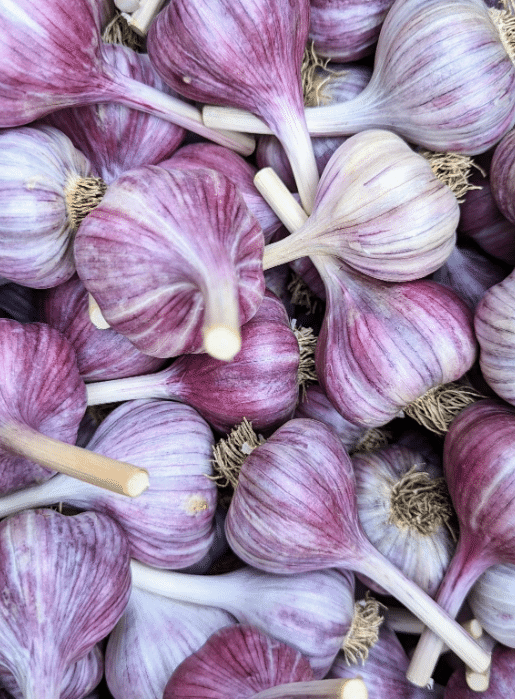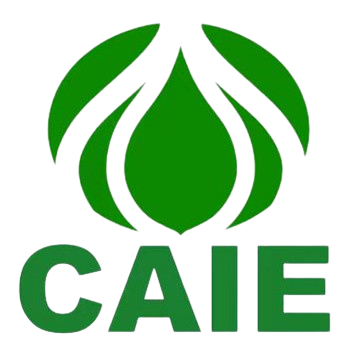Pendahuluan
Bawang putih ungu, with its captivating color and robust flavor, is rapidly transforming from a niche ingredient into a global culinary sensation. This comprehensive analysis delves into the current market dynamics and future trends shaping the purple garlic industry, offering valuable insights for farmers, retailers, and garlic enthusiasts alike.
Current Market Situation
1. Increasing Demand: A Global Appetite for Purple
The demand for purple garlic is experiencing a remarkable surge, fueled by a confluence of factors:
- Manfaat Kesehatan: Consumers are increasingly drawn to purple garlic’s impressive nutritional profile, particularly its high anthocyanin content, linked to potent antioxidant and anti-inflammatory properties.
- Fleksibilitas Kuliner: Chefs and home cooks alike are embracing purple garlic’s unique flavor profile—a blend of robust garlic notes with subtle sweetness—making it a versatile ingredient across diverse cuisines.
- Organic and Specialty Market Appeal: Purple garlic often aligns with consumer demand for organic, locally sourced, and specialty produce, allowing it to command premium prices in these markets.
2. Global Production: From Asia to the Americas
Purple garlic cultivation is expanding globally, with key production regions emerging across continents:
- Asia: China and India lead the way as major producers, leveraging favorable growing conditions and established agricultural practices.
- Eropa: Spain, Italy, and France are renowned for their high-quality purple garlic, often cultivated using traditional, time-honored methods.
- Amerika Utara: The United States and Canada are witnessing a surge in purple garlic production, driven by increasing consumer demand and a focus on local, sustainable agriculture.
3. Market Prices: A Balancing Act of Supply and Demand
The price of purple garlic is influenced by a complex interplay of factors:
- Quality: Premium quality garlic, characterized by vibrant color, intense flavor, and large bulb size, commands higher prices in the market.
- Penawaran dan Permintaan: Fluctuations in supply, often due to weather conditions, seasonality, or crop yields, can significantly impact market prices.
- Sertifikasi Organik: Organically certified purple garlic typically garners higher prices, reflecting consumer demand for chemical-free and environmentally friendly farming practices.
| Wilayah | Harga Rata-rata per Pound | Kualitas | Catatan |
|---|---|---|---|
| Asia | $2.00 – $3.00 | Medium to High | Largest producer, varied quality |
| Eropa | $4.00 – $6.00 | Tinggi | Premium quality, traditional farming |
| Amerika Utara | $3.50 – $5.00 | Medium to High | Increasing production, growing demand |
Future Trends: A Glimpse into the Vibrant Future
1. Technological Advancements: Cultivating Efficiency and Quality
Technology is poised to revolutionize purple garlic farming, driving efficiency, sustainability, and enhanced product quality:
- Pertanian Presisi: The use of GPS-guided equipment, sensors, and data analytics allows for optimized planting, irrigation, and harvesting practices, maximizing yields and resource efficiency.
- Penelitian Genetik: Ongoing research into garlic genetics is leading to the development of new purple garlic varieties with enhanced flavor profiles, disease resistance, and adaptability to different climates.
- Otomatisasi: The adoption of automated systems for planting, harvesting, and processing helps address labor shortages, reduce costs, and improve overall efficiency in the purple garlic supply chain.
2. Sustainability Initiatives: Cultivating a Greener Future
Sustainability is no longer optional—it’s a core consumer demand. The purple garlic industry is embracing practices that prioritize environmental and social responsibility:
- Pertanian Organik: The demand for organically grown purple garlic continues to rise, encouraging farmers to adopt organic practices that eliminate synthetic pesticides, herbicides, and fertilizers.
- Konservasi Air: In regions facing water scarcity, purple garlic growers are implementing water-saving technologies like drip irrigation and rainwater harvesting to minimize water usage.
- Kesehatan Tanah: Focus is shifting towards practices that enhance soil health, such as crop rotation, cover cropping, and reduced tillage, promoting long-term soil fertility and ecological balance.
3. Market Expansion: Unlocking New Horizons
The purple garlic market is ripe for expansion, with opportunities emerging across diverse sectors:
- New Geographic Markets: Emerging economies in South America, Africa, and Southeast Asia present significant growth potential as garlic consumption rises and consumers embrace new flavors.
- Diversifikasi Produk: The development of value-added products, such as purple garlic powders, pastes, infused oils, and even garlic-based health supplements, is expanding the market and creating new revenue streams.
- E-commerce Boom: Online platforms and e-commerce marketplaces are making it easier for consumers to access specialty garlic varieties, including purple garlic, further driving market growth and accessibility.
4. Health and Wellness Trends: Purple Garlic as a Functional Food
As consumers prioritize health and well-being, purple garlic is well-positioned to capitalize on this growing trend:
- Kesadaran Gizi: Increased awareness of purple garlic’s impressive nutritional profile, including its antioxidant, anti-inflammatory, and immune-boosting properties, is driving demand among health-conscious consumers.
- Makanan Fungsional: Purple garlic is being incorporated into functional foods and dietary supplements aimed at specific health concerns, such as heart health, immune support, and blood sugar regulation.
- Tren Diet: The popularity of diets that emphasize whole, natural foods, such as the Mediterranean diet, which features garlic prominently, further supports the inclusion of purple garlic in healthy eating patterns.
Challenges and Opportunities: Navigating the Path Forward
1. Challenges: Addressing Market Realities
The purple garlic market, while promising, faces inherent challenges:
- Perubahan Iklim: Unpredictable weather patterns, including droughts, floods, and extreme temperatures, can significantly impact crop yields and quality, posing risks to consistent supply.
- Pengelolaan Hama dan Penyakit: Purple garlic is susceptible to various pests and diseases, requiring effective and sustainable management strategies to minimize crop losses and ensure quality.
- Persaingan Pasar: As purple garlic gains popularity, competition from other garlic varieties and imported products intensifies, requiring strategic differentiation and marketing efforts.
2. Opportunities: Seizing the Purple Advantage
Despite challenges, the purple garlic market presents significant opportunities for growth and innovation:
- Innovation in Cultivation: Investing in research and development to create new purple garlic varieties with enhanced traits, such as higher yields, disease resistance, and improved flavor, can gain a competitive edge.
- Pendidikan Konsumen: Educating consumers about the unique qualities, health benefits, and culinary versatility of purple garlic through targeted marketing campaigns, culinary events, and online resources can drive demand.
- Global Partnerships: Building strategic partnerships with international buyers, distributors, and retailers can expand market reach, access new consumer bases, and create a more resilient and diverse supply chain.
Consumer Preferences and Trends: Understanding the Driving Forces
1. Consumer Preferences: What Matters Most
Understanding consumer preferences is paramount to success in the purple garlic market:
- Rasa: Consumers seek a robust, pungent garlic flavor with a hint of sweetness, distinct from standard white garlic.
- Penampilan: The vibrant purple color is a key selling point, adding visual appeal to dishes and appealing to consumer desire for unique and visually appealing ingredients.
- Origin and Sustainability: Consumers increasingly prioritize locally grown, organic, and sustainably produced purple garlic, reflecting a growing awareness of food sourcing and environmental impact.

2. Emerging Trends: Shaping the Future of Food
Several broader trends are influencing consumer behavior and shaping the future of the food industry, including the purple garlic market:
- Farm-to-Table Movement: The farm-to-table movement emphasizes fresh, locally sourced, and seasonal ingredients, aligning perfectly with consumer demand for transparency and connection to food origins.
- Penjelajahan Kuliner: Consumers are becoming more adventurous in their culinary pursuits, seeking out new flavors, global cuisines, and unique ingredients, creating opportunities for purple garlic to shine in innovative dishes.
- Kesehatan dan Kebugaran: The ever-growing emphasis on health and wellness is driving demand for functional foods, natural ingredients, and plant-based diets, positioning purple garlic as a nutritious and flavorful addition to a healthy lifestyle.
Strategies for Success: Cultivating a Thriving Business
Businesses seeking to thrive in the dynamic purple garlic market should consider these key strategies:
1. Quality Control: The Foundation of Trust
- Kualitas yang konsisten: Maintaining consistent quality across all products, from flavor and color to bulb size and freshness, is crucial for building brand reputation and customer loyalty.
- Praktik-praktik yang Transparan: Transparency regarding farming practices, origin, and processing methods fosters consumer trust and aligns with the growing demand for ethical and sustainable sourcing.
2. Marketing and Branding: Telling the Purple Story
- Mendongeng: Crafting a compelling brand story that highlights the unique qualities, origins, and health benefits of your purple garlic can create an emotional connection with consumers and differentiate your brand.
- Daya Tarik Visual: Leveraging the inherent beauty of purple garlic through high-quality photography, packaging, and marketing materials can capture consumer attention and communicate premium quality.
- Konten Pendidikan: Providing valuable content, such as recipes, cooking tips, health information, and insights into sustainable farming practices, can engage consumers, build brand loyalty, and drive sales.
3. Distribution Channels: Reaching the Right Consumers
- Penjualan Online: Establishing a strong online presence through e-commerce platforms, direct-to-consumer websites, and online marketplaces can expand reach and cater to the growing segment of consumers shopping for specialty ingredients online.
- Kemitraan Ritel: Collaborating with grocery stores, specialty food retailers, farmers’ markets, and restaurants can increase product visibility, reach a wider customer base, and build brand awareness.
- Direct-to-Consumer Models: Exploring direct-to-consumer models, such as subscription boxes, farm shares, or community-supported agriculture (CSA) programs, can foster direct relationships with consumers and provide a consistent revenue stream.
Conclusion: Embracing the Purple Potential
The purple garlic market is brimming with potential, driven by a potent blend of consumer demand, health trends, and innovative opportunities. By understanding the market dynamics, embracing sustainable practices, and connecting with consumers through compelling storytelling and high-quality products, businesses can capitalize on this purple wave and cultivate a thriving future in the world of garlic.

Hubungi CAIE hari ini dan biarkan kami menjadi sumber tepercaya Anda untuk jahe Cina premium.
- Ingin tahu lebih banyak tentang kita.
- Ingin hubungi kami secara langsung.
- Untuk lebih lanjut blog bawang putih
- CAIE produk bawang putih
- Panduan Komprehensif untuk Bawang Putih Ungu:Bawang Putih Ungu: Panduan Komprehensif